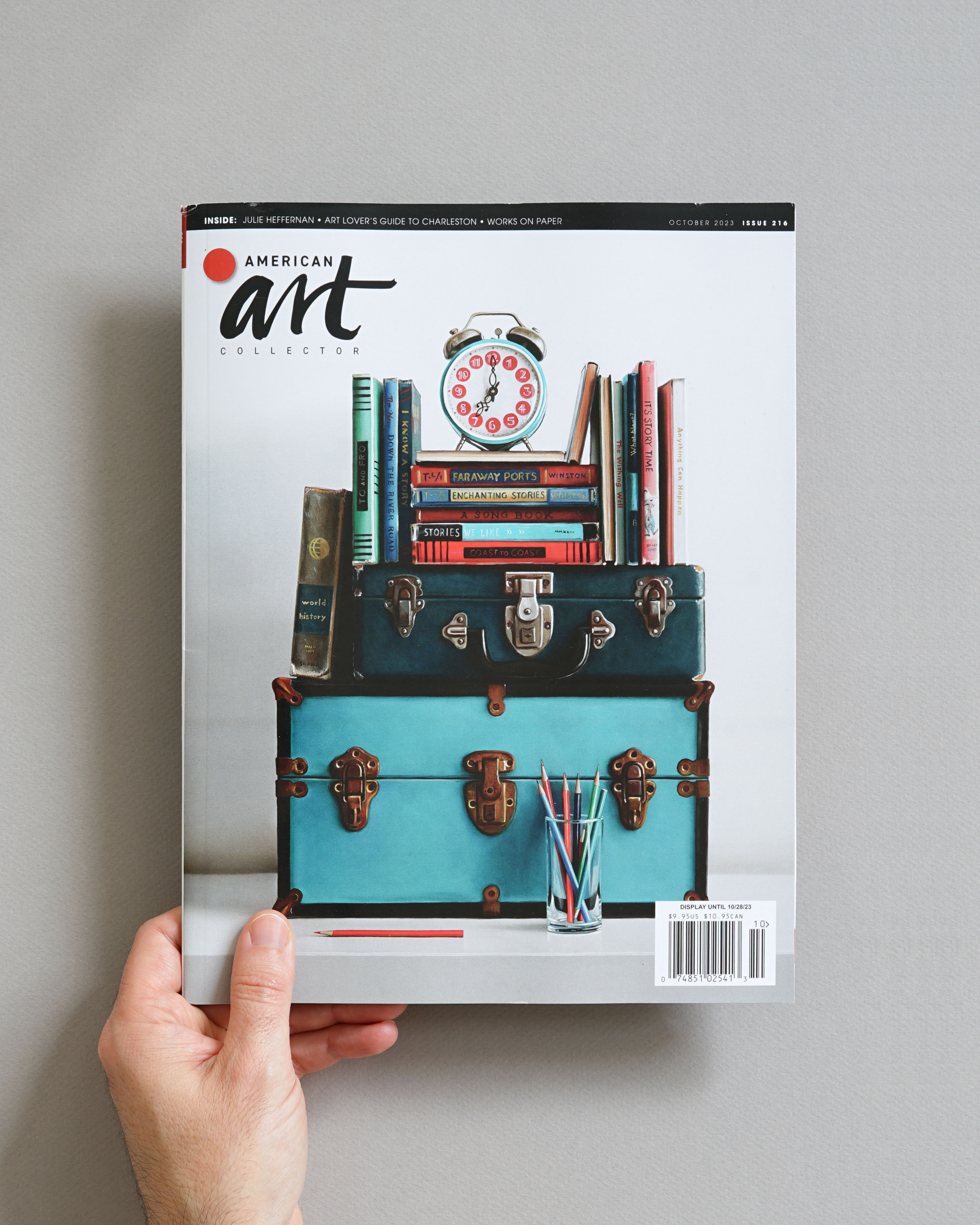I am so happy to share the news that one of my paintings is on the cover of American Art Collector magazine’s October 2023 issue. Check out the feature below, where I talk about the recent work for my upcoming exhibition in New York City.

Over years of collecting, Christopher Stott has amassed roughly 100 clocks, 25 typewriters and 80 cameras, not to mention an array of colorful trunks and countless books. These, and a handful of other carefully vetted objects like old telephones and gumball machines, are the building blocks of his crisp still lifes.
These aren’t your run of the mill objects— some of his cameras are 120 years old, and Stott doesn’t collect or paint anything made after 1960.
“I’m lucky my wife sees value in everything I collect,” says Stott. “But every so often I’ll come home with a really expensive typewriter, and I’ll get a look like, ‘I hope that doesn’t sit around for three years before you paint it.’”
Rather than exude and evoke nostalgia for yesteryear, Stott’s pieces are matter of fact and straightforward—in positioning and tone. They are almost devoid of emotion, that is, until you start reading between their neat, orderly lines.
“If someone feels a sense of nostalgia that’s fine…I think it’s more a sense of melancholy,” Stott says, adding that the old cameras would often still have film in them. “It was so old it couldn’t be developed, but I would always think of who was using it and what they were doing and the circumstances of why the film was left inside the camera.”
On the surface, the objects are simply beautiful forms. There is something satisfying and soothing in the symmetrical compositions, and the way the shapes fit together—the square trunks and camera cases offset by the circular faces of the clocks and camera lenses—into a visually pleasing arrangement of color, order and form.
The compositions and the act of painting them have a calming effect on the artist as well.
“Living in a world of chaos—from family life and beyond—it seems you can’t control anything,” says Stott. “In my painting practice, I can find a sense of control. I can create a sense of order and tidiness in my paintings. Painting slowly and intentionally is a form of meditation. It’s a calm place that I can actually exist in and when someone looks at my paintings I think they can get that sense of order and calmness as well.”
Stott often works on several pieces at once, allowing the canvases to strike up a dialogue. For instance, Wishing Well and 1938 Royal KHM Typewriter ended up representing different stages of life. The former has a glass full of colored pencils and primary school readers from the 1930s and ’40s; while the latter, with a typewriter and standard graphite pencils, has a more serious, adult feel.
At 40-by-30 inches, the works are slightly larger than life. Although he has been experimenting with aerial views, they are typically presented head-on, on a white shelf under high, bright light, suggestive of a product display. “I’m marrying the old traditions and techniques of the Dutch Masters with a modern advertising aesthetic,” he explains.
Stott’s renderings are a way of honoring these objects and the stories, like secrets, they contain. It extends beyond their appearance into the other sensory qualities associated with them—the musty smell of old books, the sound of a ticking clock, the punch of a typewriter key, the click of a camera, pencil on paper.
“That’s what I want people to see—there’s actually a life to these things,” he says. “[We’re so fixated on the latest technology] we’ve become almost completely blind to the stepping stones that got us here. I think the initial invention is the real breakthrough and then there’s everything that came after.”
